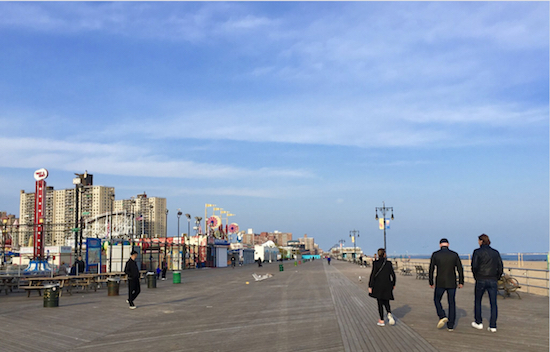Coney Island landmarks, present and (we hope) future
Eye On Real Estate: #LandmarkTheBoardwalk

Coney Island's Boardwalk is a beautiful thing to behold, even on an unusually chilly spring day. Eagle photos by Lore Croghan
O beloved Boardwalk — you should be a city landmark.
For almost a century, you’ve been the scene of salt air and summer dreams in the People’s Playground.
City Councilmembers Mark Treyger and Chaim Deutsch and Brooklyn residents have been campaigning since 2014 for scenic landmark designation for the Riegelmann Boardwalk.

Coney Island
View MoreIn just a little over an hour, you can be transported from the glitz and glamor of Manhattan to the old-school amusement of Brooklyn's storied Coney Island. The destination offers thrills, sun, surf and a unique brand of entertainment that will feel worlds away from the rest of the City.